There isn’t anything complete on this site (unlike my rather cozy Inspector Morse site) and I hope one day to do it more justice, but for now, it’s enough just to have a stopping place to hear the theme music and see a few photos. I loved the show and would like to collect the episodes which are numerous, expensive and hard to find especially in complete sets. For now, here are pictures, a setting and the names of the cast members—I only had to look up a couple of them; the rest I knew from memory!

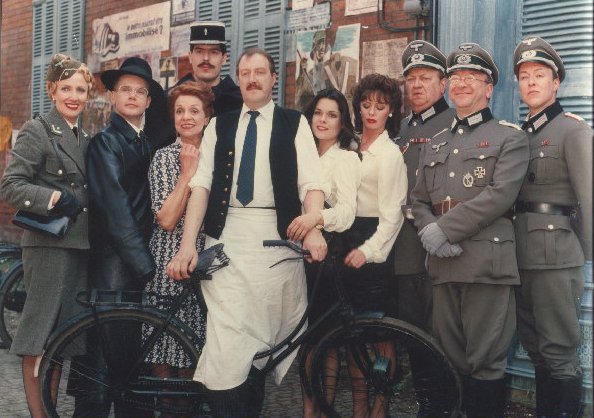 |
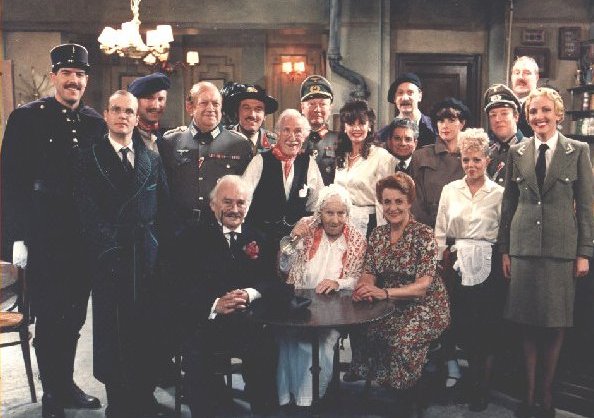 |
Welcome to Café René in the German-occupied village of Nouvion in northern France, probably the Normand coast not far from the D-Day beaches. Mr. René Artois and his wife, Edith, run a frugal café-bar, the Café René, and walk a shakey line between worming extras (paraffin, kerosene, etc.) out of the German officers that frequent their establishment and half-heartedly helping the Resistance hide two British airmen under enemy noses. His radio codename: Nighthawk.
|
|
This series began in the fall of 1984 (on British television) and ended in the spring of 1992 with a special and particularly hilarious reunion wind-up in 1994 (set in modern day). Along the way, there was a severe automobile accident to Gordon Kaye plus deaths and defection of other cast members. Sadly, since then, many more have left us. They will be fondly remembered.
The characters in this situation comedy are all in persona: the French represented by a French accent, the Germans with a German accent, the British with an exaggerated milieu accent, etc. However, it gets more complicated from there. The French, Germans and Italians can understand each other, but no one can understand the British nor can the British understand the continentals. Some of the characters, like Michelle of the Resistance, speak fluent English and others, like Officer Crabtree, only think they can speak French.
It’s very complicated, but here’s our story...
On the orders of General von Klinkerhoffen, Lieutenant Gruber reluctantly executes René very early on in the series. Unbeknownst to the executioner and other Germans, but understood by the café staff, he really escapes and comes back posing as his “twin brother”, also named René. This execution will haunt Gruber, who had great affection for René, for the quasi totality of the episodes.
Reluctantly, and quite in spite of himself, René Artois becomes the greatest French Resistance fighter of World War II and is even flown to London at one point to be decorated by Churchill! Along the way, he plays the members of the local, German military establish off each other: Colonel von Strohm against General von Klinkerhoffen and both of these off of the local Gestapo officer and nephew of Heinrich (Uncle Heiny) Himmler, Herr Otto Flick. Michelle of the Resistance (say that in your best French accent) gets René into the most impossible plots to evacuate the British airmen across the Channel (which never work). All these parties are searching for and ever stealing from each other a painting that will ensure their standard of living after the war: the Fallen Madonna with the Big Boobies by the great (and imaginary) Dutch master, Van Klump.
René is inexplicably adored, even lusted after, by every woman who meets him (with the exception of Michelle, the head of the local Gaullish Resistance). Kidnapped once by Louise Laroque, head of the Communist Resistance and a childhood friend of his, he is forced to accept her marriage proposal under pain of death at one point even though he’s still married to Edith (except that he’s not since he is René’s twin brother, René, right?).
Constantly assailed by his shapely young admirers in search of a quick cuddle when his wife isn’t looking and inevitably caught in the act, René must think fast to excuse his apparently inappropriate behavior as variously expedient acts of aid to poor, distraught girls in need of comfort. The dialog is more or less always the same:
Edith: “René! What are you doing with that peasant girl in your arms?”
René: “You stupid woman! Can’t you see that this poor girl...”
Meanwhile, Edith, thought publicly to be a widow, is herself pursued by Mr. Alphonse, the wealthy undertaker (“swiftly and with style, I am at your service, Monsieur”). Of course, if they marry, René will lose ownership of the café, so no running off with Yvette or any other of his delicious young admirers just yet.
These are just the main plots running through this series. In addition, Herr Flick always seems to brow-beat Helga into vaguely kinky manifestations of feigned love for him while Leclerc actually does think he’s a Resistance fighter and often shows up in egregiously phony disguises to announce to everyone (precisely what they already knew), with a sly lifting of his spectacles, “Pssst: It is I, Leclerc!”.
Along the way, there are plenty of onion sellers (many adopt this disguise and enter the café loudly proclaiming to be a poor, onion-selling peasant just passing through). There are also exploding Christmas puddings (puddings? in France? this must be British television), Knockworsts down trousers with rolled-up paintings inside, poisoned wine, secret radio contacts under a bed with knobs that flash whenever London is calling, and an endearing German cavarly officer who fancies René and leaves us all wondering if the Lieutenant isn’t a bit “funny that way” (except that he isn’t as the last episode so plainly demonstrates: don’t miss the video clip that introduces his character below).
Really, it was very lonely at the Russian front...
Here is a short video clip composed of excerpts from several episodes that gives a small flavor of the series. If the music that accompanies this web site hasn’t stopped yet, click here.
It begins when René and Lieutenant Gruber meet for the first time: “Really, it was very lonely at the Russian Front...” You need to understand that René was told to meet Roger Leclerc who would come into his café with an unlit cigar and René is supposed to ask him if he would like a light (expecting a certain response in return—standard spy stuff, etc.) When Gruber doesn’t answer in the expected way, he finally asks him if he is “one of those” he was supposed to meet, but Gruber, not being a spy, mistakes his meaning entirely.)
There are more video clips below; I especially find Herr Flick of the Gestapo hilarious.
Allo, allo, London: Zeess eez Nighthawk calleeng...
Here are a couple of oft-repeated sound bites from the series that I found to play here. (You will probably have to replay these clips as they start up, then cut off while awaiting download.)
- René calls London for marching orders: “Allo, allo: This is Nighthawk! Are you receiving me? Over.”
- Michelle of the Resistance has important news to share: “Listen very carefully, I shall say this only once!”
Great photos...
Some other great photos I ripped off from places on the web in order, left-to-right, top-to-bottom:
- Michelle of the Resistance
- cast shot inside the café (Herr Flick, Helga, Edith and René)
- Herr Flick being softened up by Private Helga Geerhart
- cast shot in front of the café (Gruber, Helga, Herr Flick, Yvette, officer Crabtree, Maria, Edith, René, Mme. Fanny, Leclerc (later stand-in for Jack Haig)
- Gruber in his little tank
- Colonel von Strohm and Lieutenant Gruber
- Gruber standing between Monsieur Alphonse and René just before these duel over Edith
- Yvette posing as a French dusting maid in the château where General von Klinkerhoffen makes his headquarters; the crew are there to photgraph secret war plans or nip something for the Resistance
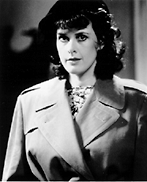
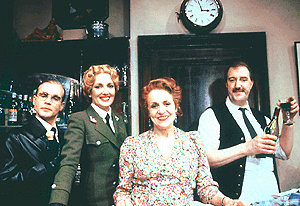
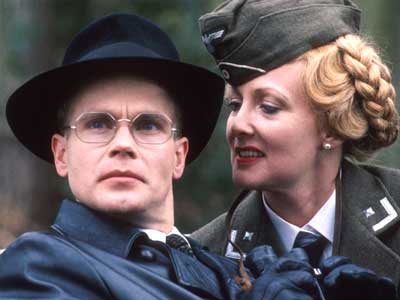
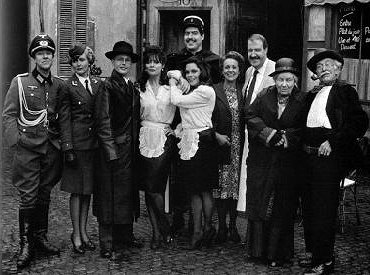
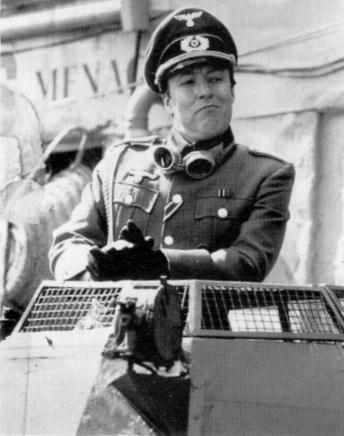
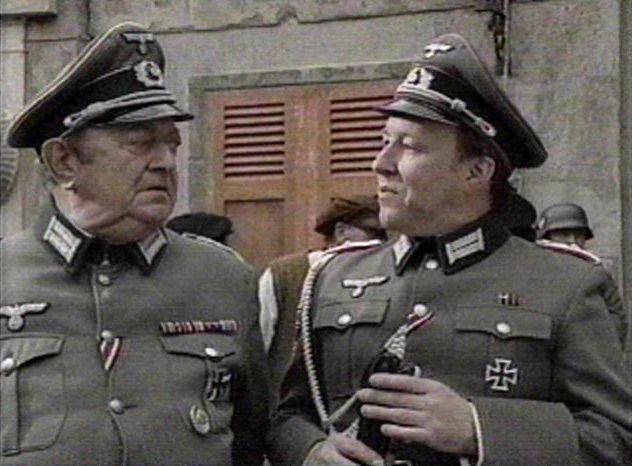
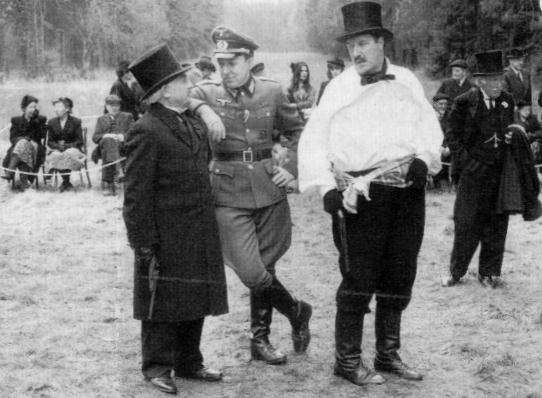
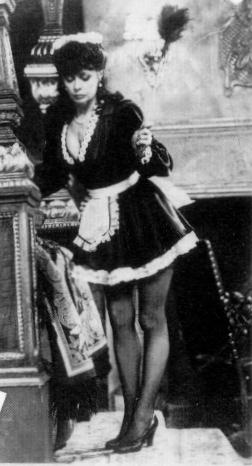
More video clips...
The fearsome Herr Flick of the Gestapo...
Maria, Michelle of the Resistance, a cheese salesman ("It is I, Leclerc"), Yvette, Edith, Colonel Von Strohm, Bavarian Dances and Hitler Youth...